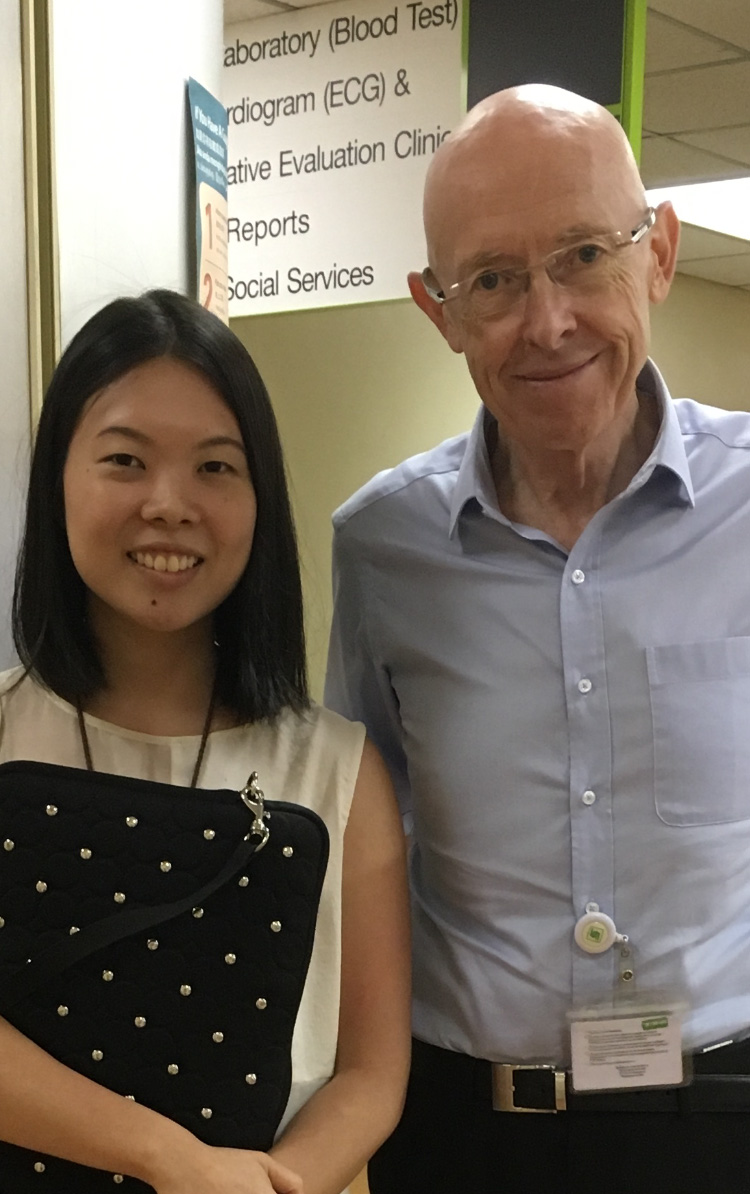Research in the Duke-NUS MD Programme:
I am Xue Ling, a born-and-bred Singaporean who did my undergraduate studies in Molecular Cell Biology and Economics at UC Berkeley. My four years in Berkeley were a huge eye-opener; it first exposed me to world-class research and passionate scientists and professors who were both knowledgeable in their fields, and dedicated to teaching. Fast forward to today, I am now a final year Duke-NUS student who just completed my research project on ultrasonography of the trigger finger.
As part of the Duke-NUS curriculum, our third year of medical school comprises 9 months of research that concludes with a thesis submission. These 9 months enable us to delve further into a scientific field we are interested in, and equip us with valuable skills for future research undertakings as doctors.
Choosing a research topic:
Most of my classmates and I chose research areas that were related to a specialty we were interested in. We also asked our seniors for advice on mentors and research topics, which ranged from mouse model work on signaling pathways in pancreatic cancer, to a comparison of imaging modalities on renal perfusion.
More about my research:
I undertook my research with Prof Duncan McGrouther and Prof Tay Shian Chao, at the Department of Hand Surgery in Singapore General Hospital. Our research explored the use of ultrasonography on identification of a tendon thickening in trigger finger. Although trigger finger is a common hand condition that afflicts many, the exact mechanism for trigger finger is not clearly explained. My work with Prof McGrouther and Prof Tay hoped to clearly identify a tendon thickening that could explain the clicking or locking sensation that patients feel when they flex their fingers.

Prof McGrouther and me
With Prof McGrouther’s immense knowledge on the hand, we decided to use ultrasonography to measure the tendon thickness at various pre-determined locations, in various hand positions, to show the proximal movement of a tendon thickening that may be the cause of triggering in trigger fingers. After months of work, we found that the proximal movement of a tendon thickening during finger flexion could be the cause of triggering in trigger fingers. If you are interested to find out more, you can view my poster here.
Reflections on the project:
I really enjoyed working with Prof McGrouther; he was a fantastic mentor who very kindly shared his knowledge and experience with me, and gave me valuable advice and guidance with my research project.
This project’s main challenge was patient recruitment as many patients were unwilling to commit 1.5 hours for a detailed ultrasound scan of their fingers. Thankfully, we managed to recruit kind patients who sacrificed time and energy to help us in our endeavour.
Through the project, I learnt to collaborate with colleagues from various departments, think critically and develop contingency plans for various changing situations. The research experience gave me an opportunity to gain experience and knowledge in the field we are interested in and honed my ability to think laterally and formulate research questions. These skills help us to develop minds that question the status quo to improve our current practice for the betterment of patient care.
By: Chuang Xue Ling, Class of 2017